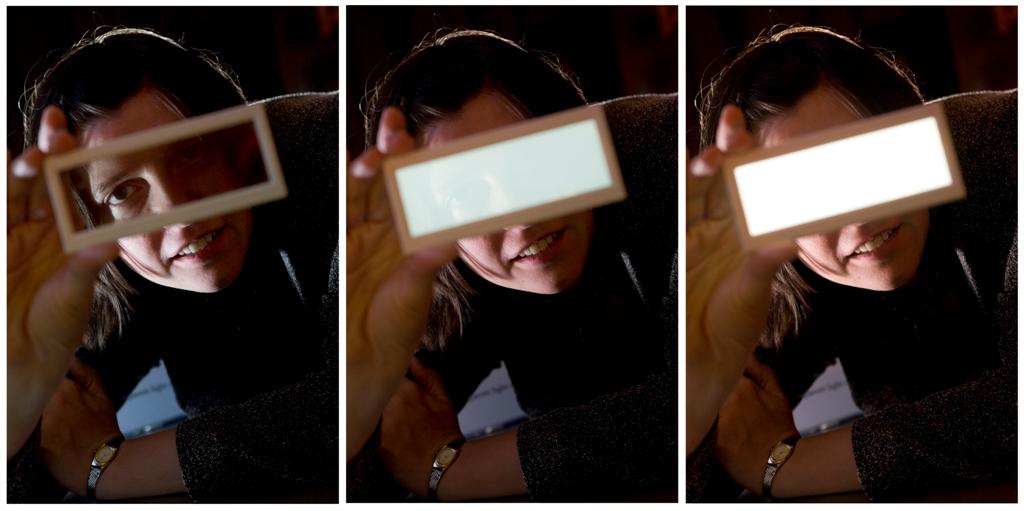Philips: Transparent OLED panels coming

What if you could have windows that illuminated at night?
Philips Research has shown off a new transparent 12-centimeter OLED concept that is completely transparent when turned off and fully illuminated when turned on.
OLED100 is a European collaboration between companies looking to further the development of OLED lighting through collective research. The theory behind transparent OLED technology has existed for awhile, but only now are working prototypes emerging.
"It could be a few years before we see this kind of OLED produced commercially," said Hans Driessen of Philips Research. "We're still far away from creating this, as we need to create bigger surfaces, and this is what projects like OLED100 are doing at the moment."
Philips has been showing its prototype off at trade shows for a number of months now, but still faces challenges, according to the article.
"The problem is that currently OLEDs need to be produced in a clean room, and a single particle could destroy the entire OLED, so we're working on methods to cope with this at the moment,' Driessen added.
According to the company's website, OLED panels will start as a novelty and eventually become a reality:
Since OLED light is not yet powerful enough to provide full illumination, it will initially be used for decorative purposes. However, the range of applications will expand dramatically as the technology develops. The size of panels is also set to grow: current prototypes are 5cm x 5cm up to 15cm X 15cm, but already panels of 60cm X 60cm are envisioned. Philips has developed plain white and “warm white” panels, while “color-variable” OLEDs, capable of producing light of almost any color (including mimicking daylight and traditional lighting), are likely to appear over the next 3-5 years.
Today’s OLEDs are mounted on glass. In principle, any transparent substrate would do, but so far only glass has been able to protect organic films sufficiently from the effects of moisture and air. However, scientists at Philips Research are looking for ways to make plastic substrates that will provide the necessary protection. This opens the way for flexible and moldable OLED lighting panels, so that, in future, almost any surface area, flat or curved, could become a light source. We could see the development of luminous walls, curtains, ceilings and even furniture. Flexible OLED panels are likely to become available within 5 to 8 years.
As for transparent OLED computer and television displays at your desk, well, keep praying.
